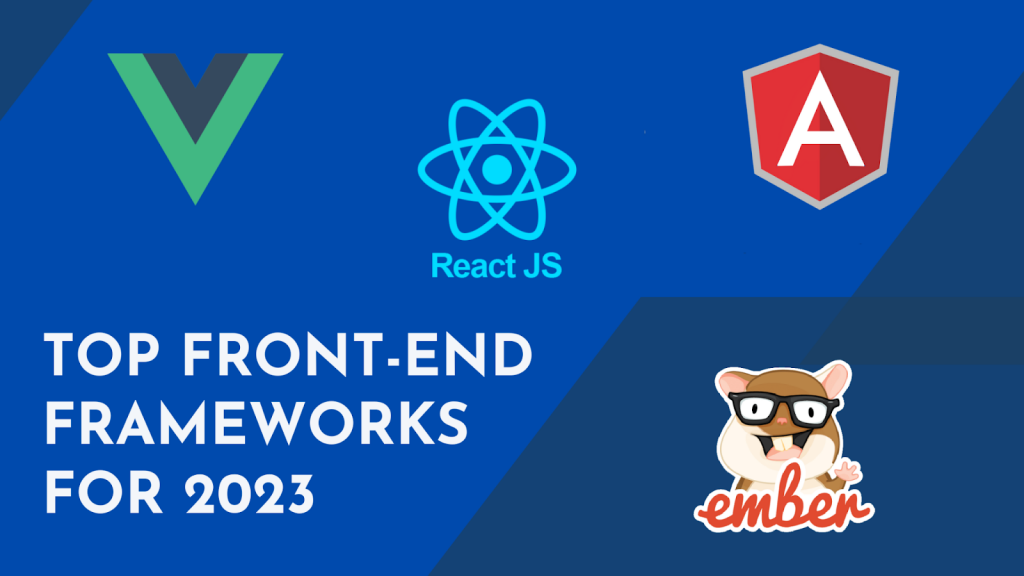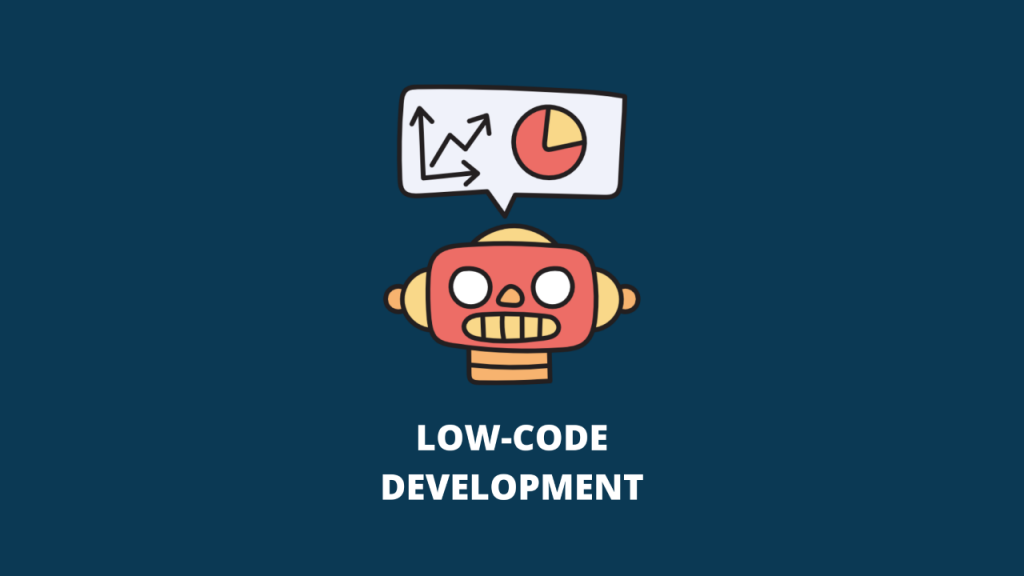Making the decision to use the right front-end framework can be the key to success. With 2023 on the horizon, it’s crucial to stay updated on the top front-end frameworks to ensure your projects are not only efficient but also future-proof.
So, let’s look into the intricacies of frontend frameworks in 2023, exploring what makes them the most popular frameworks and why they are contenders for the title of the best frontend framework in 2023.
What Are Frontend Frameworks?
Front-end frameworks are the backbone of modern web development. They provide developers with a structured set of tools, libraries, and conventions to build user interfaces, manage application states, and interact with APIs efficiently. These frameworks serve as a foundation, reducing redundancy and ensuring project consistency.
The Importance of Choosing the Right Tools
Selecting the appropriate front-end framework is a make-or-break decision for developers. These frameworks offer reusable code modules, standardized front-end technologies, and pre-built interface blocks, streamlining development and enhancing efficiency.
As businesses strive to provide seamless user experiences, the demand for skilled professionals versed in frontend frameworks for web development continues to grow. Now, let’s explore the top five front-end frameworks for 2023.
A Deep Dive into the Best Front-End Frameworks of 2023
Discover the powerhouses in the world of web development by exploring our carefully selected front-end frameworks list, tailored for the modern developer.
1. React
React, also known as ReactJS, stands as a stalwart in the world of front-end development. Powered by Facebook, it’s a JavaScript library designed for building user interfaces and components. With its Virtual DOM and JSX coding styles, React enables developers to create manageable and reusable components. Its flexibility and performance make it one of the most popular front-end frameworks for a wide range of projects.
Pros:
- Component reusability for efficient development.
- Consistent performance with the Virtual DOM.
- React hooks make component development simpler.
Cons:
- For beginners, advanced tools can be difficult to use.
- Frequent updates can impact documentation.
- JSX complexity for newcomers.
Used by: PayPal, Uber, Walmart, Facebook, eBay, Google, etc.
2. Angular
Angular, developed by Google, is a robust front-end framework perfect for single-page applications. It is among the most popular front-end frameworks in 2023 for its extensive set of features and resiliency. It utilizes TypeScript and offers a component-based structure. Angular scales well, from small projects to enterprise-level applications. It offers a wide array of tools and resources, including extensive frontend libraries, that empower developers to create feature-rich and scalable web applications with ease.
Pros:
- Built-in two-way data binding.
- Reduces code through default features.
- Decoupled components with dependency injection.
- Strong community support.
Cons:
- A steeper learning curve due to complexity.
- Complex apps might face performance issues.
- Multiple ways to accomplish tasks can be confusing.
Used by: Forbes, Xbox, Gmail, Upwork, PayPal, Microsoft Office, Deutsche Bank, etc.
3. Vue.js
Vue.js is a progressive MVVM framework known for its versatility and ease of use. It lets you access data-reactive elements through a simple API, making it excellent for smaller and larger projects. Vue.js is easy to learn, offers detailed documentation, and positively impacts SEO.
Pros:
- Small, fast, and beginner-friendly.
- Simple syntax and two-way data binding.
- Positive SEO effects.
- Suitable for scaling from small to large projects.
Cons:
- Limited applicability for very large projects.
- Smaller developer community.
- Lacks robust business backing.
Used by: Netflix, Facebook, Grammarly, Trivago, GitLab, Adobe, etc.
4. Ember.js
Ember.js is an open-source front-end framework designed for creating modern user interfaces. It follows the MVVM pattern and comes with built-in tools for debugging and testing. Ember.js has a well-organized community and supports JavaScript and TypeScript. Ember.js is a versatile choice for projects that require seamless integration with various frontend libraries, making it a valuable asset in your development toolkit.
Pros:
- Support for server-side rendering.
- Active and organized community.
- Compatible with JavaScript and TypeScript.
- Native testing and debugging tools.
Cons:
- Novices may find it challenging due to its steep learning curve.
- Not well-suited for small-scale projects.
- Offers limited flexibility for reusing components.
Used By: Netflix, Apple Music, Yahoo! and LinkedIn.
5. Svelte
Svelte is an innovative JavaScript compiler that prioritizes high-performance user interfaces. It differs from traditional frameworks by avoiding the use of a virtual DOM. This approach makes Svelte incredibly fast, with performance up to ten times faster than some alternatives. It’s an excellent choice for small, efficient projects but may not be suitable for very large applications due to its smaller community.
Pros:
- Exceptional reactivity and speed.
- Lightweight and simple.
- Scalable framework.
- No virtual DOM for high performance.
Cons:
- Smaller community and limited support.
- Less tooling is available.
- Not as popular as other frameworks.
Used by: Cashfree, Godaddy, HealthTree, Razorpay, etc.
This front-end development list is poised to dominate the scene in 2023.
React, Angular, Vue.js, Ember.js, and Svelte each bring their amazing strengths to the table. Your selection should be based on your project’s specific requirements and your team’s understanding of the framework. A solid knowledge of front-end frameworks for web development is essential for any aspiring developer. By embracing these options, you will be well-prepared to address web development challenges in 2023.
Introducing DEW Studio: Unleash the Power of Angular for Your Web Projects!
Are you ready to step up your web development projects? Look no further than DEW Studio, your one-stop destination for top-notch web development solutions powered by Angular! It is the best low code tool that empowers you to streamline your development process, save time and money, and create versatile applications with ease.
Why Choose DEW Studio: The Best Low Code App Development Platform?
- Efficiency: No more tedious coding marathons. With DEW Studio’s intuitive drag-and-drop interface, you can build applications faster, easier and more efficiently.
- Accessibility: Our low code solution is designed for both tech-savvy developers and beginners, making it the ideal choice for teams of all skill levels.
- Versatility: Whether you’re building web apps, mobile applications, or automating business processes, it adapts to your needs.
- Cost Savings: Reduce development costs and boost ROI. DEW Studio streamlines your workflow, helping you achieve more with less effort.
- Customization: Tailor applications to your unique needs with customizable templates and components.
- Scalability: Start small and dream big. DEW Studio grows with you, ensuring your applications can scale to meet your business’s demands.
Our Services:
- Angular Web Development: From Angular app development to dynamic web solutions, we do it all.
- Responsive Design: Our responsive design ensures your web projects look stunning on all devices, including desktops, tablets, and smartphones.
- Custom Web Apps: Need a unique web application? We’ll build it from the ground up.
- Maintenance and Support: We don’t just deliver; we’re here to support your project even after it’s live.
These features make Dew Studio a powerful and versatile low-code development tool suitable for a wide range of projects and users. Join hands with DEW Studio and experience the unmatched capability of Angular in your web projects. Be a leader in your field by elevating your online presence, engaging your audience, and staying on top of your market. It’s the future of software development at your fingertips!
Conclusion
Front-end frameworks play a pivotal role in modern web development, allowing developers to create user-friendly, efficient, and scalable applications. React, Angular, Vue.js, Ember.js, and Svelte are among the top contenders in the front-end framework arena. The decision you make should be in line with the specific requirements of your project and the level of framework knowledge among your team.



